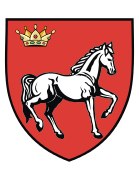Cucuteni
Coordinates: 47°16′N 26°56′E / 47.267°N 26.933°E
| Cucuteni | |
|---|---|
| Commune | |
 Cucuteni | |
| Coordinates: 47°16′N 26°56′E / 47.267°N 26.933°E | |
| Country |
|
| County | Iaşi County |
| Population (2002)[1] | 1,446 |
| Time zone | EET (UTC+2) |
| • Summer (DST) | EEST (UTC+3) |

Cucuteni (Romanian pronunciation: [kukuˈtenʲ]) is a commune in Iaşi County, Romania, with a population of 1,446 as of 2002. It is located 45 km from the city of Iaşi and 10 km from the town of Târgu Frumos. Neighbouring villages and communes are Todireşti (to the north), Târgu Frumos and Cotnari (to the east) and Ruginoasa (to the west). The name of the village is derived from Romanian word "cucută", meaning hemlock. The commune is composed of four villages: Băiceni, Bărbăteşti, Cucuteni and Săcăreşti.
A trove of ancient artifacts was discovered in Cucuteni in 1884. It was determined that these artifacts had been produced by an ancient people whose existence and culture had previously been unknown to modern scholars. Those scholars named the newly discovered ancient culture the Cucuteni culture, after the name of the village in which artifacts of that culture had first been discovered.
In Cucuteni village there is an archeological museum displaying artifacts of the Cucuteni culture, as well as a church built in the 15th century during the rule of Stephen III of Moldavia .
Gallery
- Archaeological Reserve of Cucuteni surroundings
- Dacian Tumular Tomb
- Dacian Tumular Tomb
- Cucuteni Pottery
References
- ↑ Romanian census data, 2002; retrieved on March 1, 2010
- ↑ http://romaniancoins.org/10lei06cucuteni.html
External links
| Wikimedia Commons has media related to Cucuteni. |
